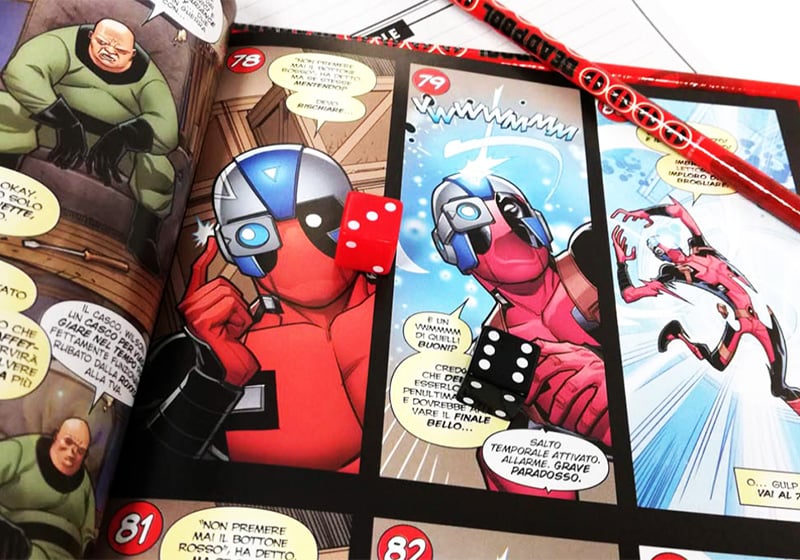Table of Contents
The game-comic phenomenon: the success of branching-plot graphic novels
First came the gamebook, a branching-plot novel that enabled readers to decide how the story should continue. This non-linear and more interactive way of reading a book reached peak popularity in the 1980s thanks in large part to Joe Dever, author of the timeless Lone Wolf series.
Since then, the idea of branching-plot stories has spread to other media, including comics.
What are game-comics?
Game-comics use the conventional panels and balloons of comics while also letting the reader literally shape the story by choosing between branches or games.
In recent years, game-comics have gained a huge audience of all ages, becoming a publishing phenomenon, with some titles achieving bestseller status.
From teenage YouTubers with young fanbases to more mature authors writing branching-plot graphic novels for adults, the game-comic is both a way of getting younger audiences to read, with its highly interactive elements, and a new way for older readers to approach stories.
Topolino and the origins of game-comics
What would come to be known as game-comics originated in Italy with Topolino, a comic series published by Disney. In the 1980s, Topolino was undergoing a period of major change. The new editor, Gaudenzio Capelli, had surrounded himself with talented authors, including a young writer who used to be a postman.
His name was Bruno Concina, a literature lover and author of a novel entitled The Castle’s Secret, which he was struggling to publish because of one key detail: the story had 33 different endings. Then, in 1984, the opportunity arose to turn this novel into a story for Topolino: and so Topolino and the Castle’s Secret was born, the first game-comic drawn by Giorgio Cavazzano.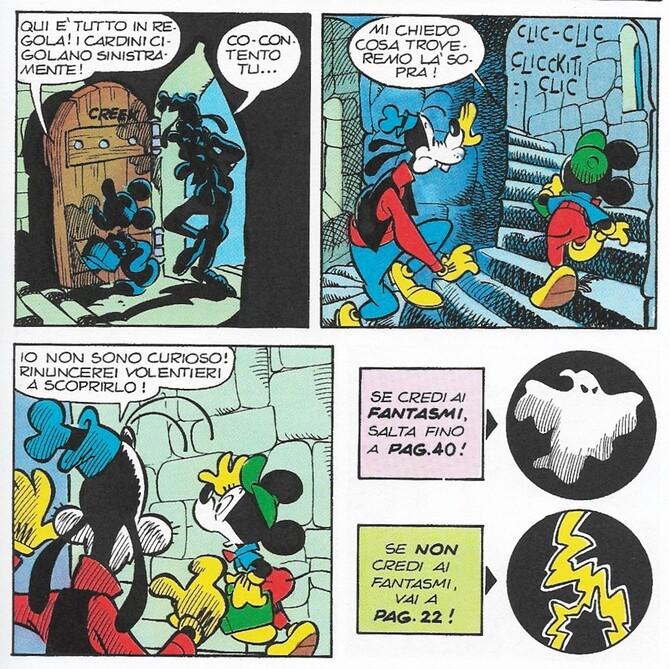
In this “proto game-comic” with six different endings, the first decision that the reader had to make was whether to set the story by day or by night.
It was Cavazzano, the artist who became synonymous with the Disney comic world, who created the graphic system for these branching plot comics: large splash pages at crucial moments in the narrative, with icons that indicated the choices to be made, almost as if they were buttons to press on a joypad.
Five examples of game-comics for all ages
From the 1990s onwards, game-comics evolved, including in the pages of Topolino, with lots of experiments, some more successful than others. One of the most recent (2014) was Peg-Leg Pete, Phantom Blot and the Crossroads of Crime, which is aimed not so much at today’s kids – digital natives who are very much at home on the web, YouTube and TikTok – but at yesterday’s children who are now grown up.
These days, game-comics are not just for kids: there are plenty of branching-plot graphic novels out there for adult audiences too. Here are some of our favourites.
- In this comic, you’re the hero! Aimed at an adult audience, it’s illustrated by MC with text by Manuro. The main character is a cop searching for his daughter, who’s been kidnapped by a mysterious entity. To do so, he must explore a dark mansion full of nasty surprises. Captive provides a character sheet with a series of skills that can affect the outcome of the story. All you need is pen and pencil (no dice) to play. You’ll also put together an inventory with a maximum of three objects to carry with you and help you in your quest. There are lots of choices to make, as there are branches to follow, and the main character can meet a sticky end: it’s an experiment for those who want to read something innovative.
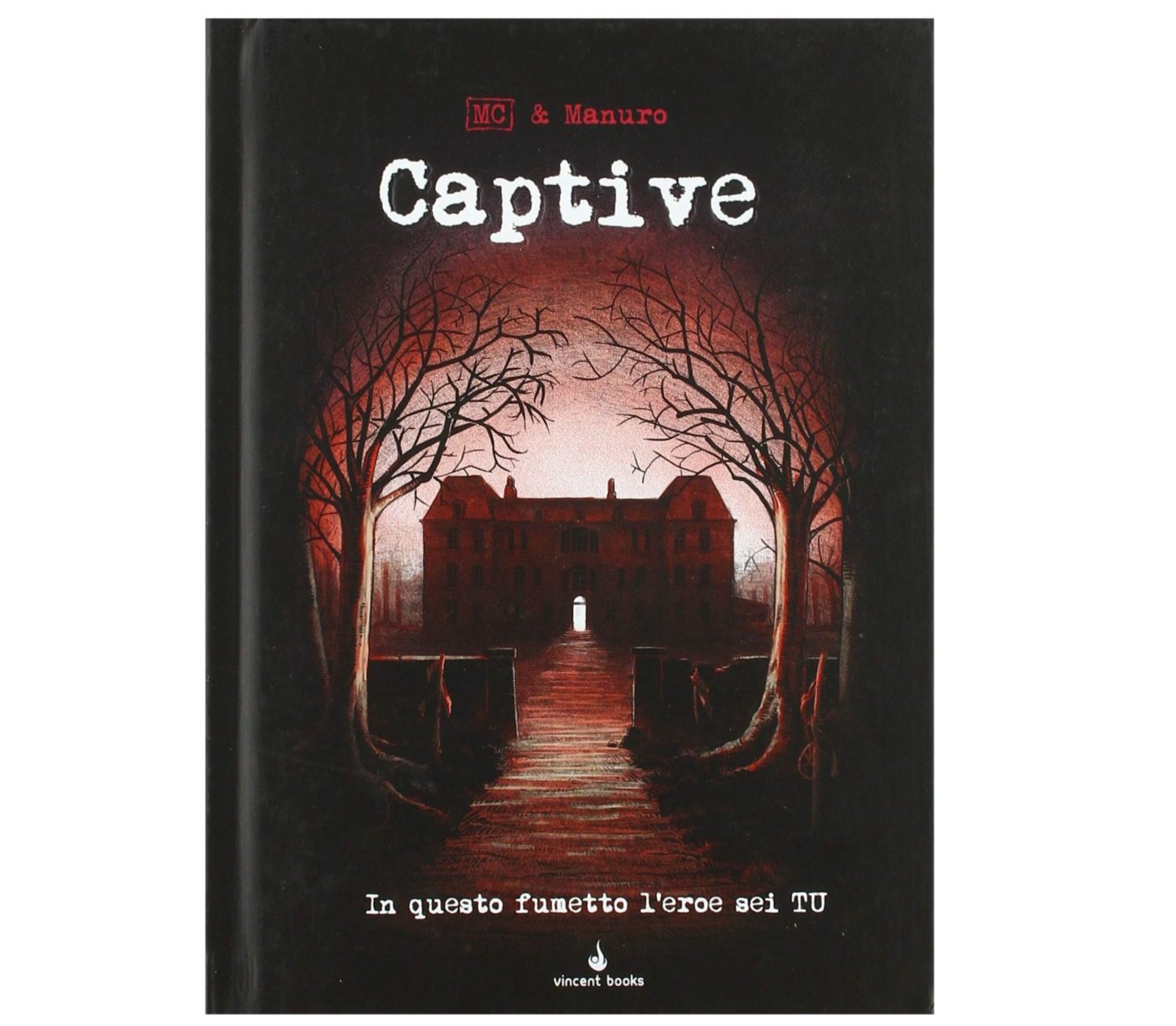
- Johnnyfer Jaypegg and the Edible Aliens’ Treasure: prolific comic artist Sio has established himself in the game-comic world too with this volume and others published by Panini Comics. It offers over 400 pages of Sio’s typical screwball humour drawn in his signature simple style. In this story, Johnnyfer can meet a premature end and then it’s game over. Indeed, there are lots of videogame references, like the double-page spread that shows a joypad with lots of “controls” for navigating within the story. It’s perfect for little ones and grown-ups, like almost all of Simone Albrigi’s other work.
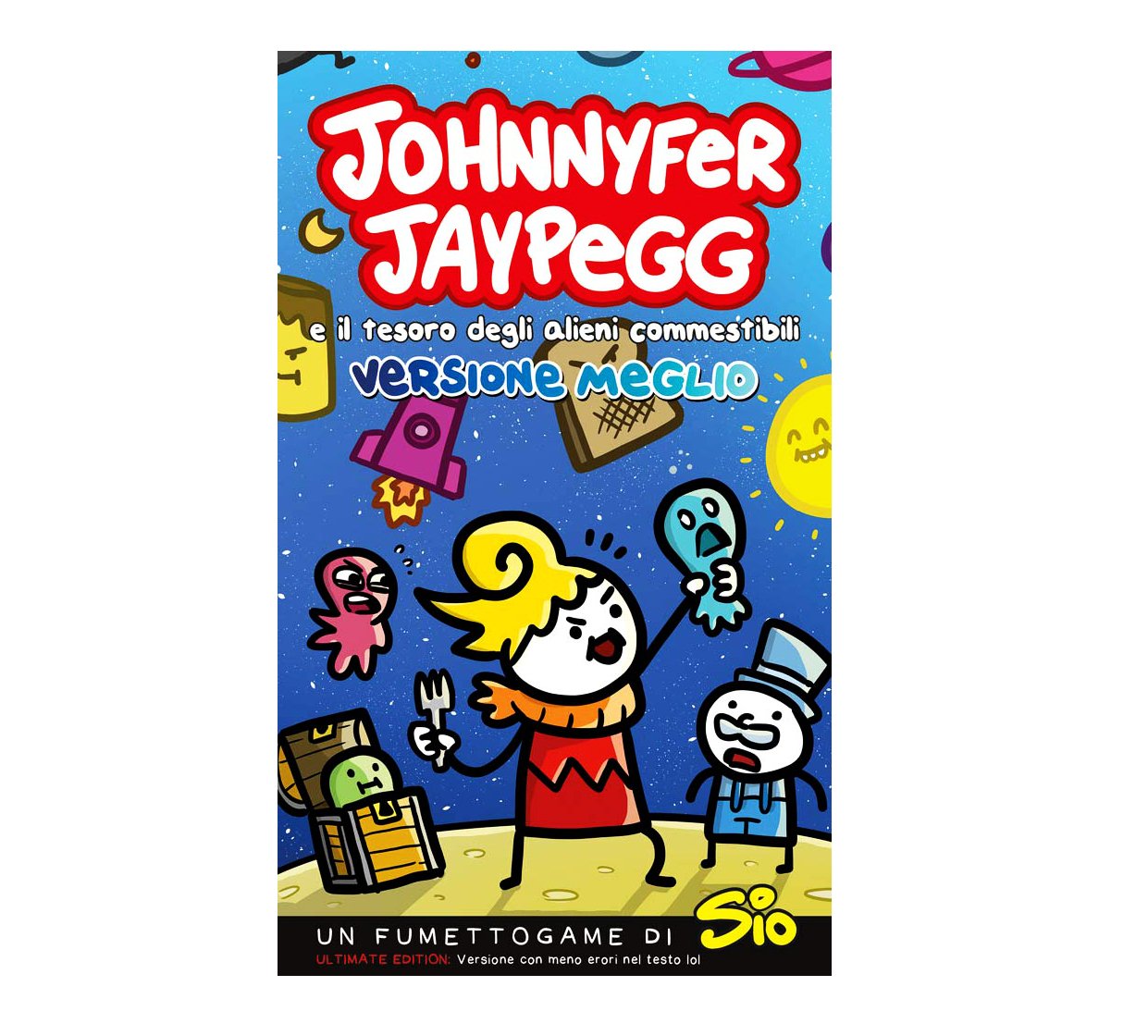
- The Quest for the Mythical Pet: published by Fabbri Editori, this is the second game-comic by Roby, the well-known Palermo-based YouTuber who loves playing Roblox, the videogame where you can create your own virtual worlds. This is one of many examples of game-comics aimed at a specific audience, namely the large community of fans that Roby has built over the years (other examples include those by Lyon, Gabby16bit and Grax). The main character is a cartoon version of Roby, and together with her friends from Roblox, you have to take on various challenges. It’s suitable for a younger audience of secondary-school age.

- Mercurio Loi No. 6: A Stroll About Rome: a unique experiment by Bonelli, the renowned publisher of Dylan Dog and Tex, which doesn’t usually stray far from tradition. Issue number 6 of Mercurio Loi is in fact a branching-plot story that offers various opportunities to change direction and arrive at different endings. Written by Alessandro Bilotta and drawn by Sergio Ponchione, it sees university professor Mercurio Loi and his assistant Ottone wander the streets of Rome. Readers can steer this adventure across the city in which they will encounter bishops, hypnotists, mysteries, nightmares and dramatic endings.
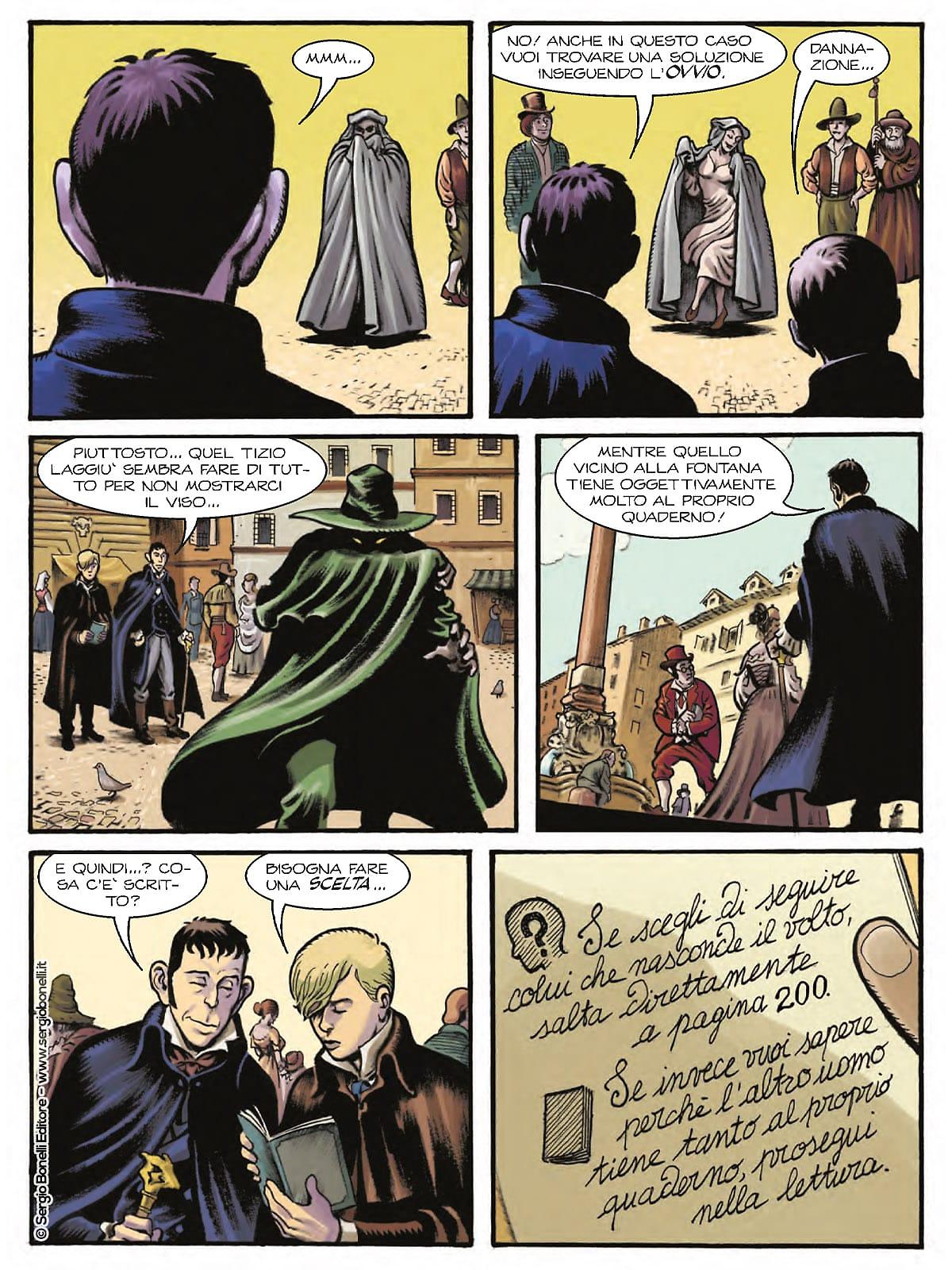
- You are Deadpool!: for lovers of American comics, especially the eccentric and over-the-top Deadpool. Presented in a more premium format than other American comics, it numbers 100 pages, has a hardcover and is perfect bound. The reader doesn’t move from page to page based on their choices, but rather from panel to panel, each of which is individually numbered. As always, Deadpool breaks the fourth wall, speaking directly to the reader, and during this bizarre tale they encounter other Marvel characters like Daredevil and Hulk.
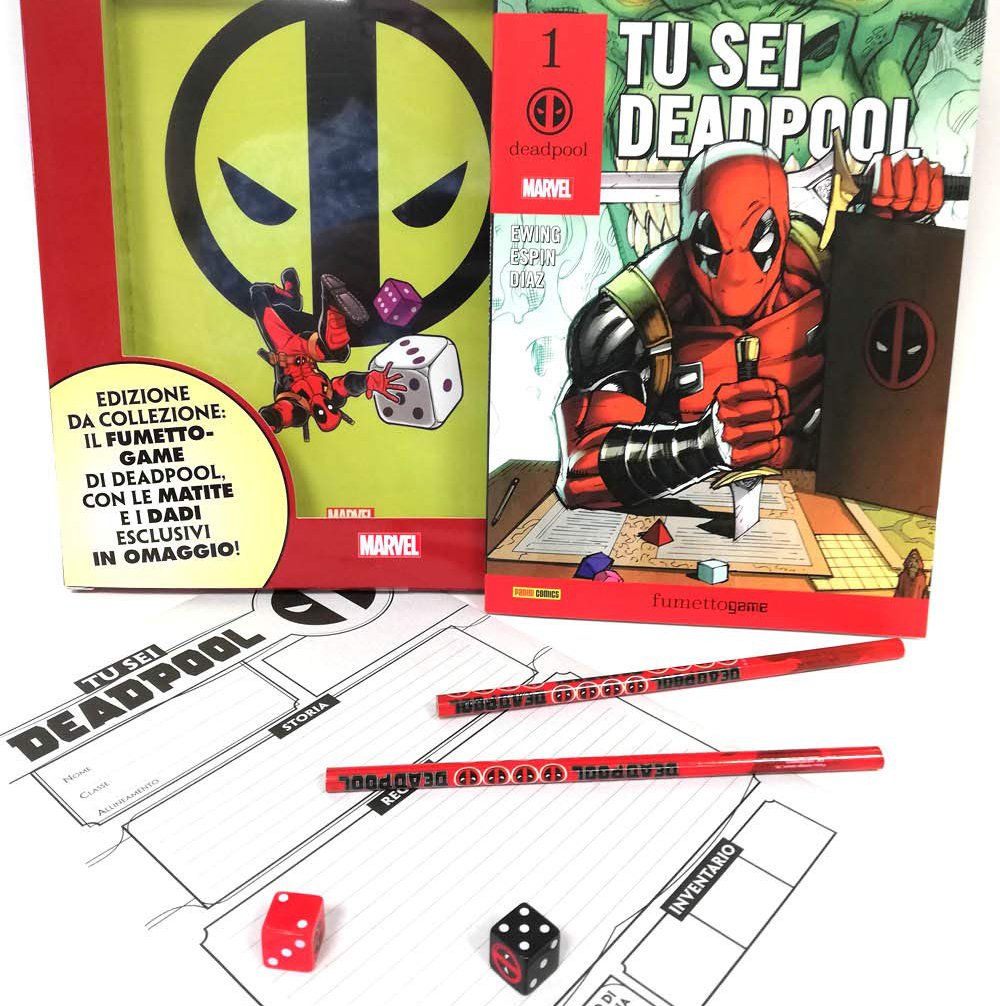
That wraps up our overview of game-comics, a phenomenon that has plenty more to offer in future.

